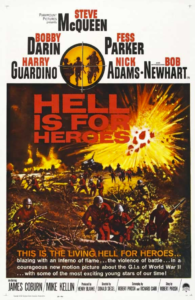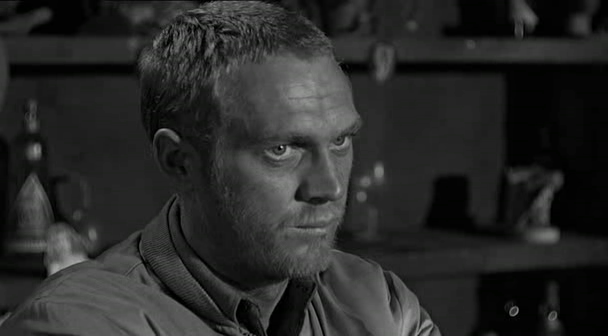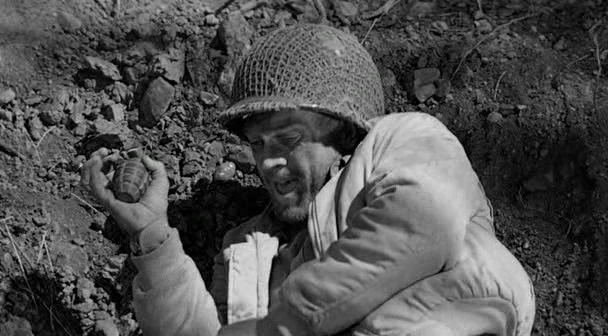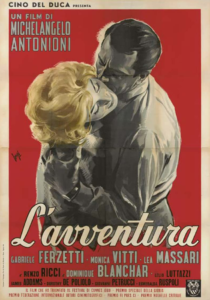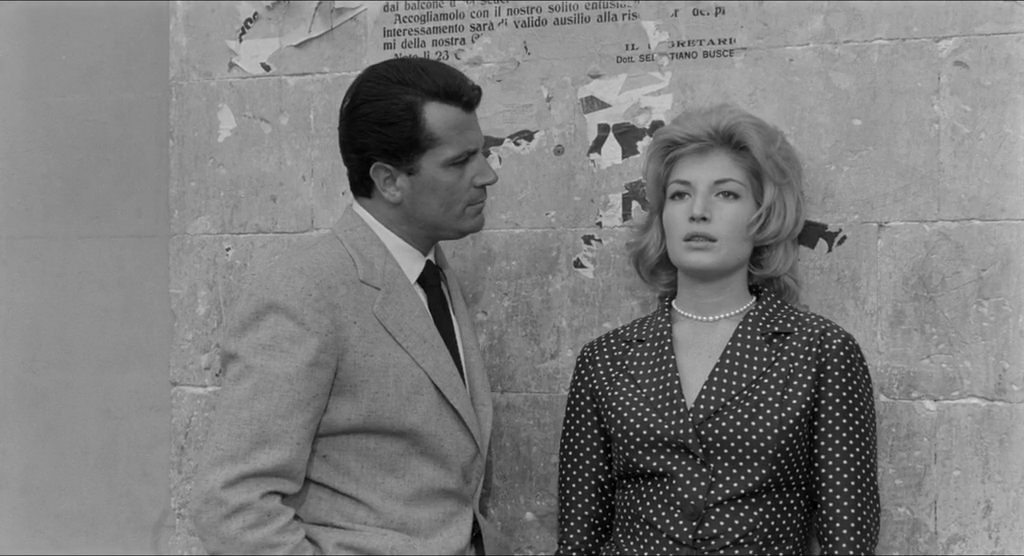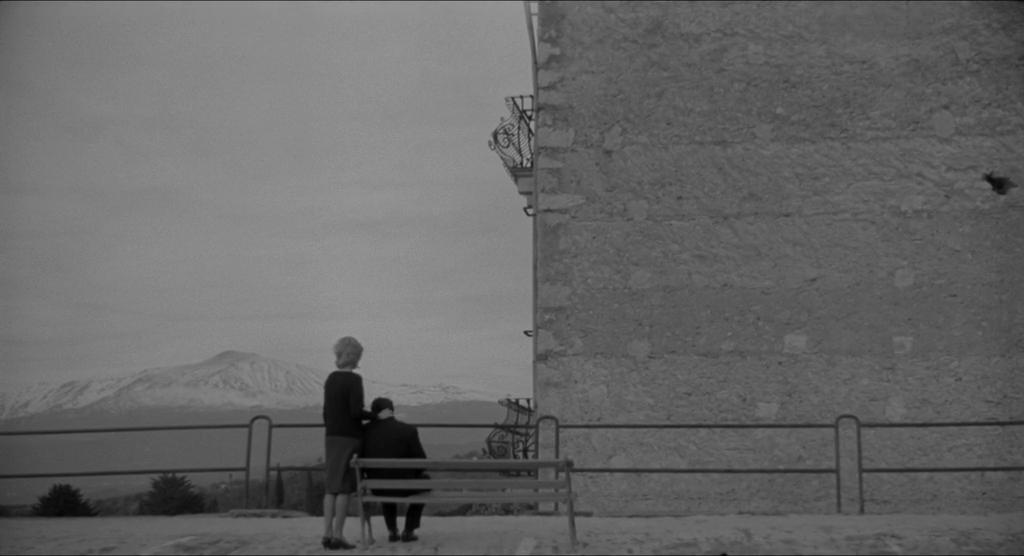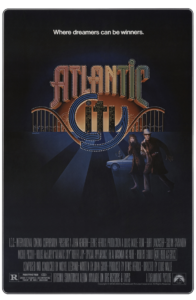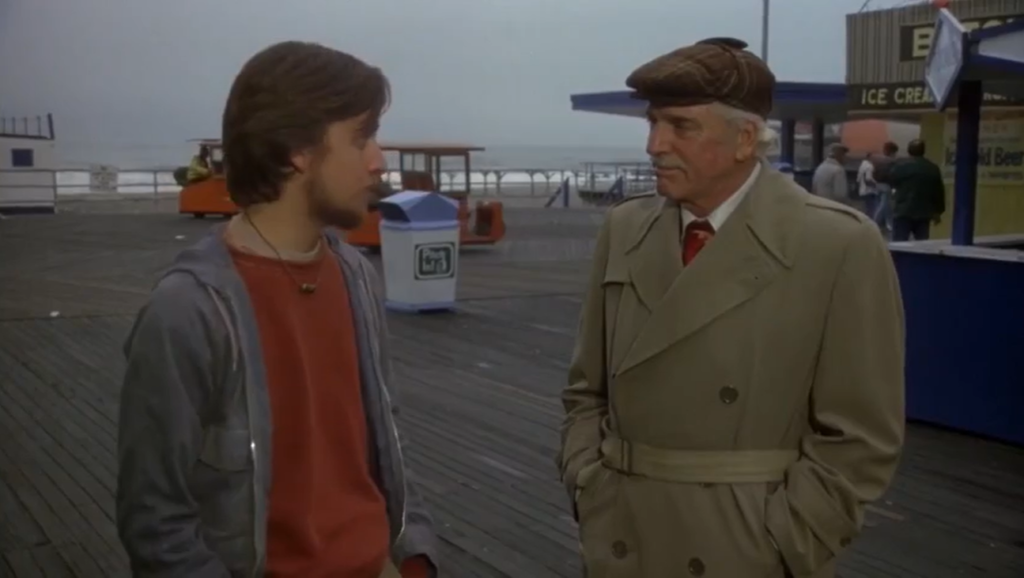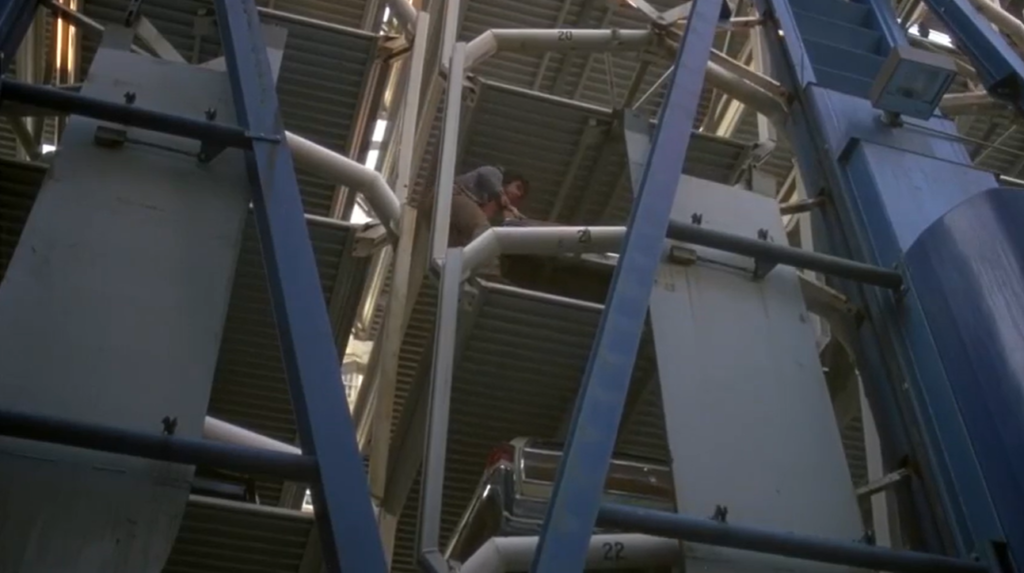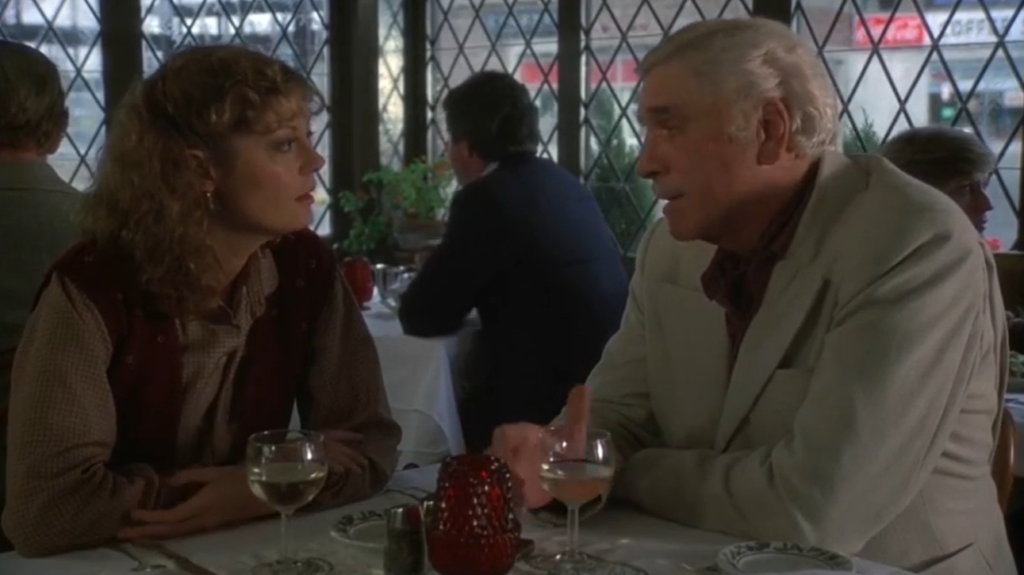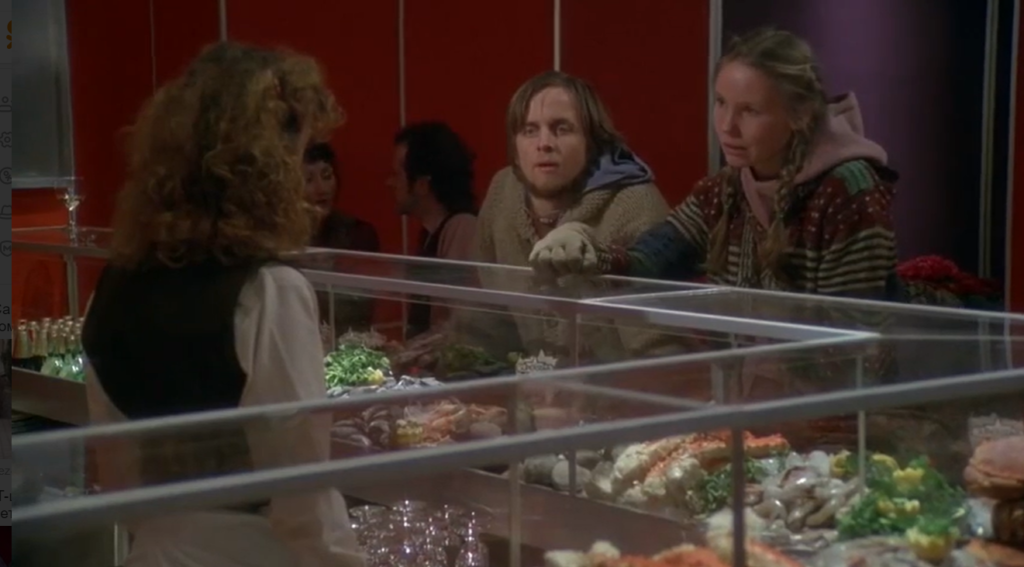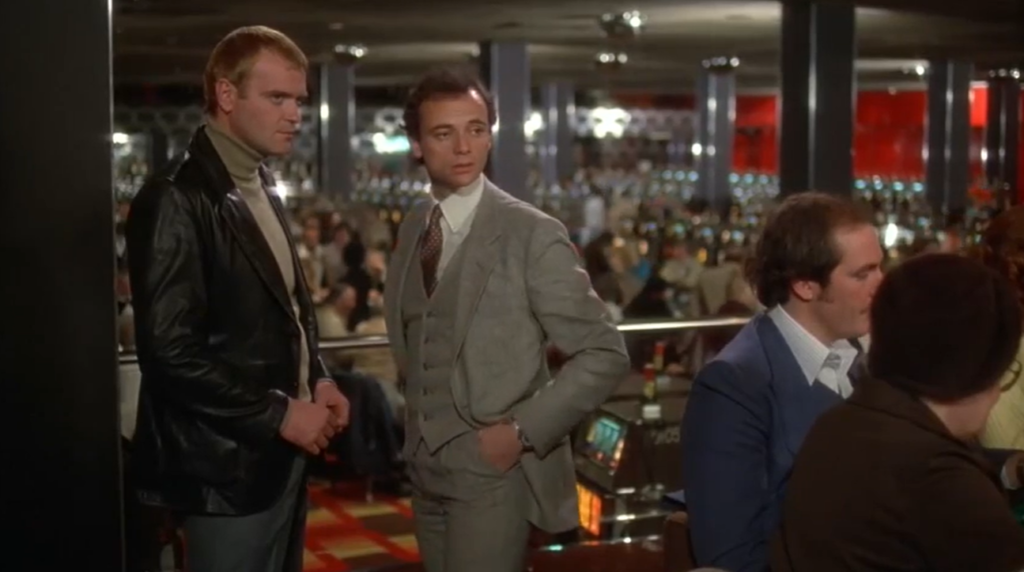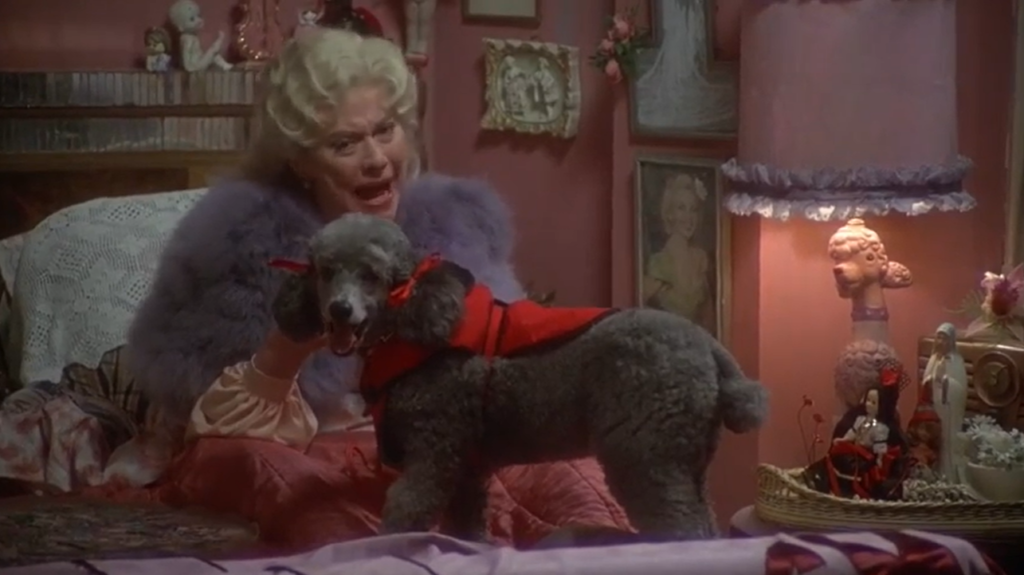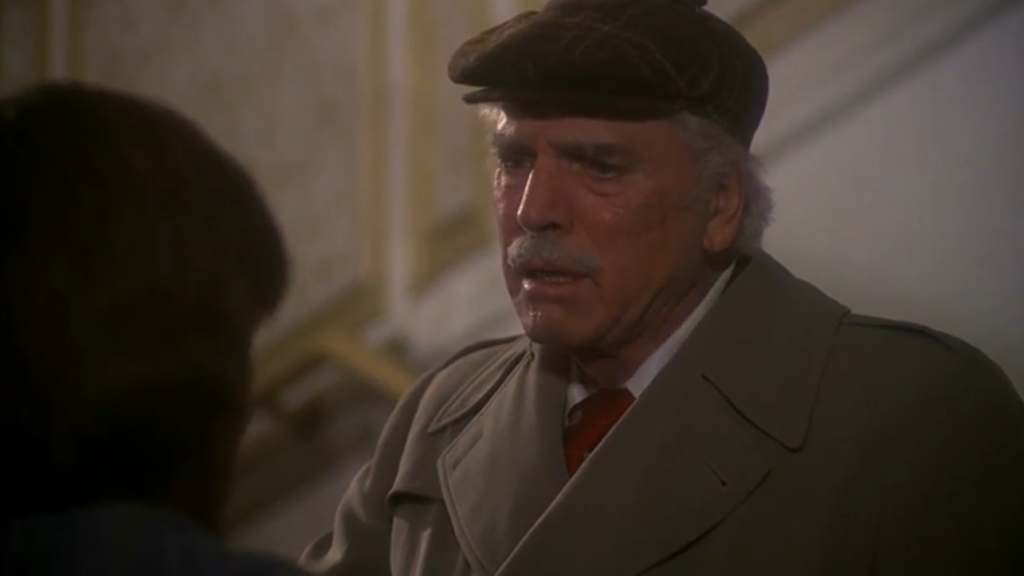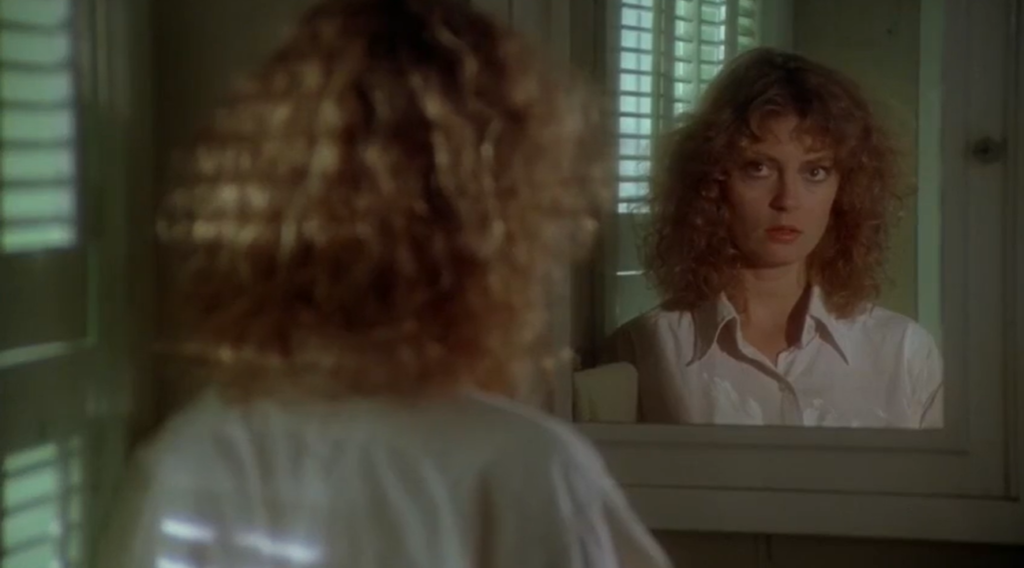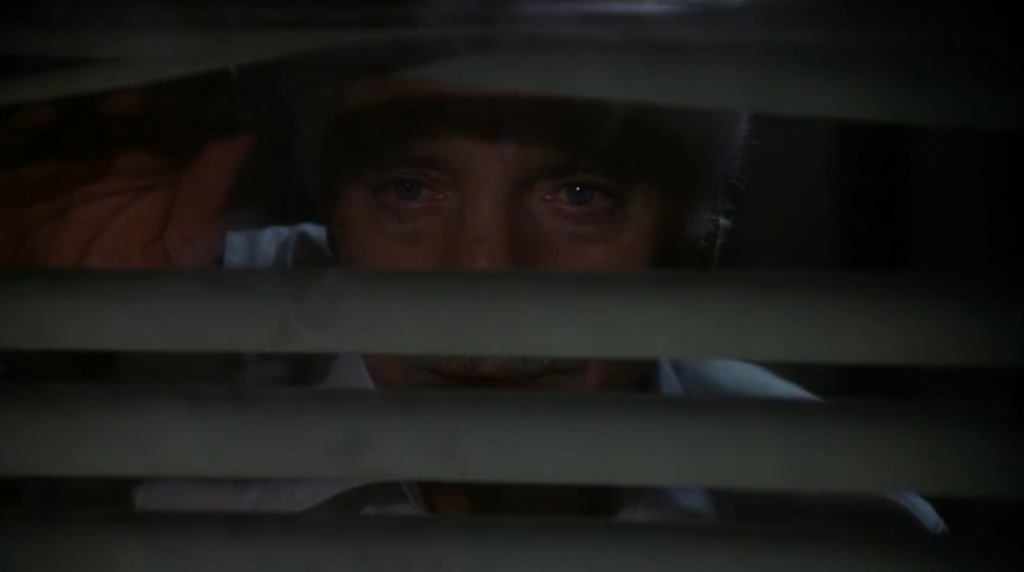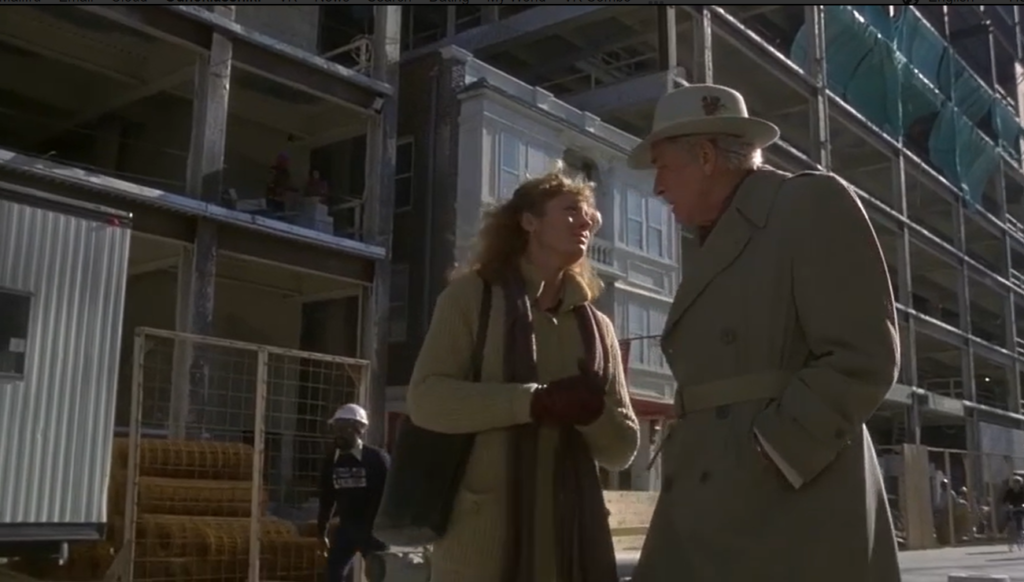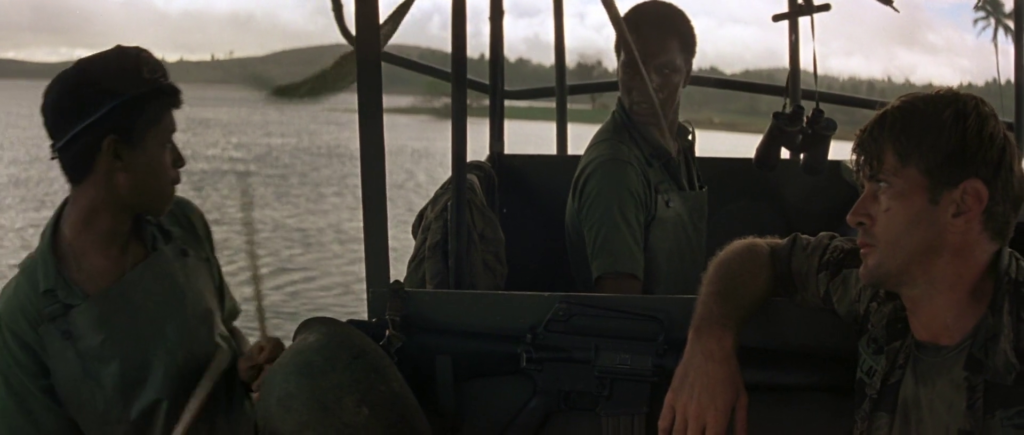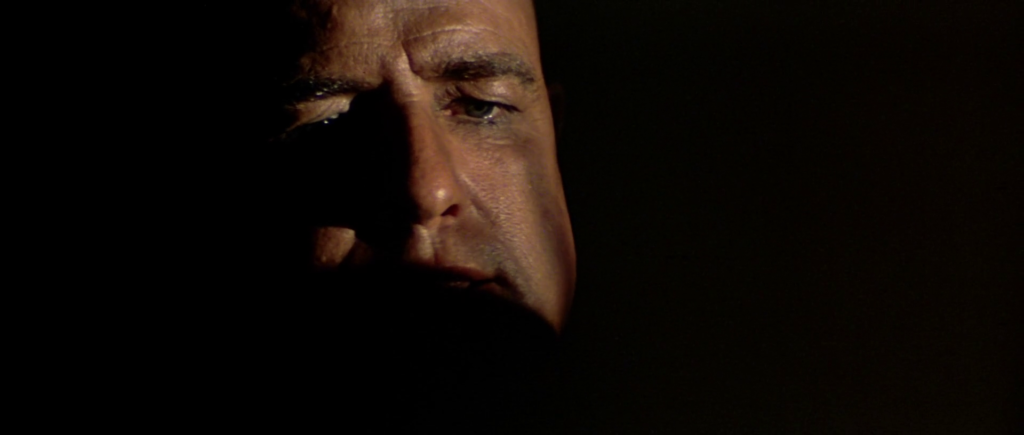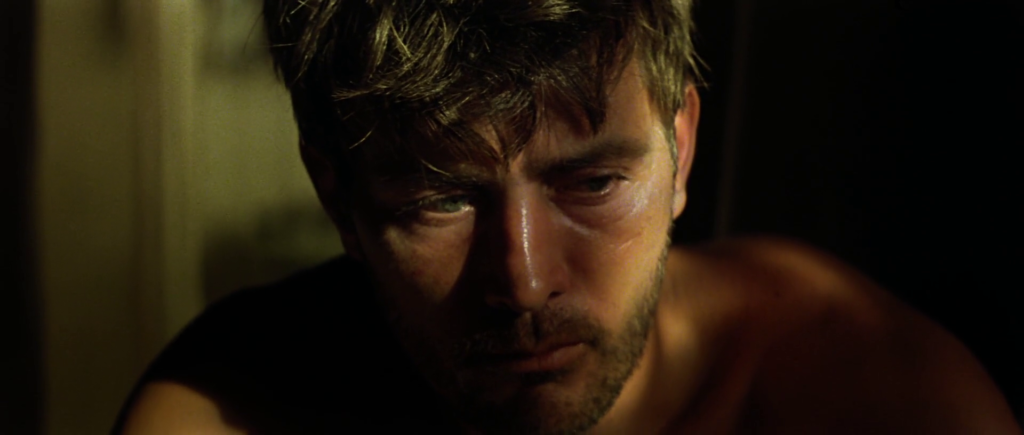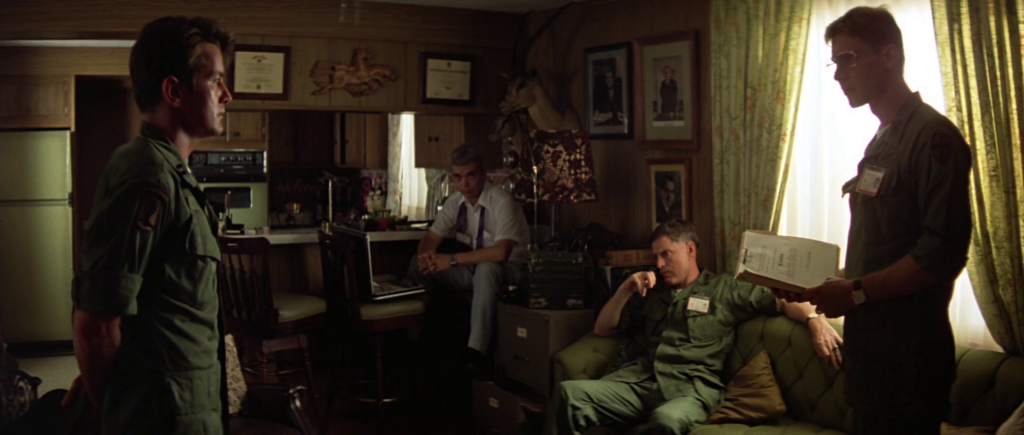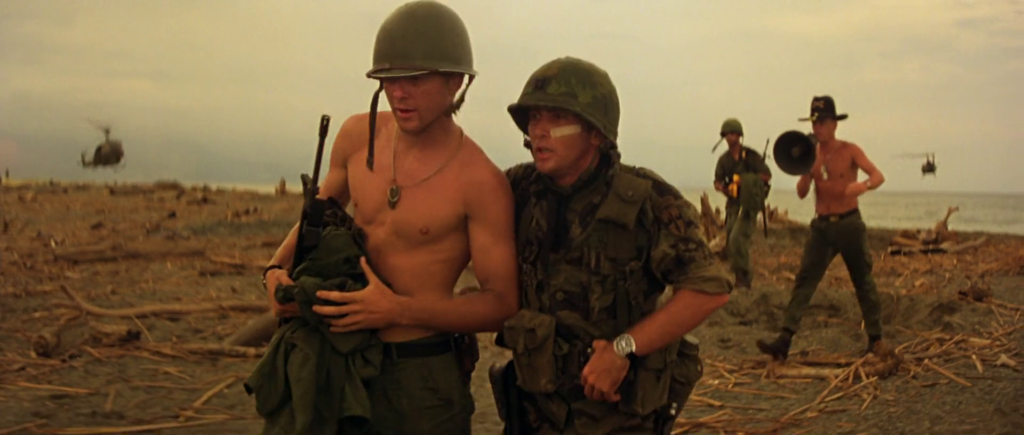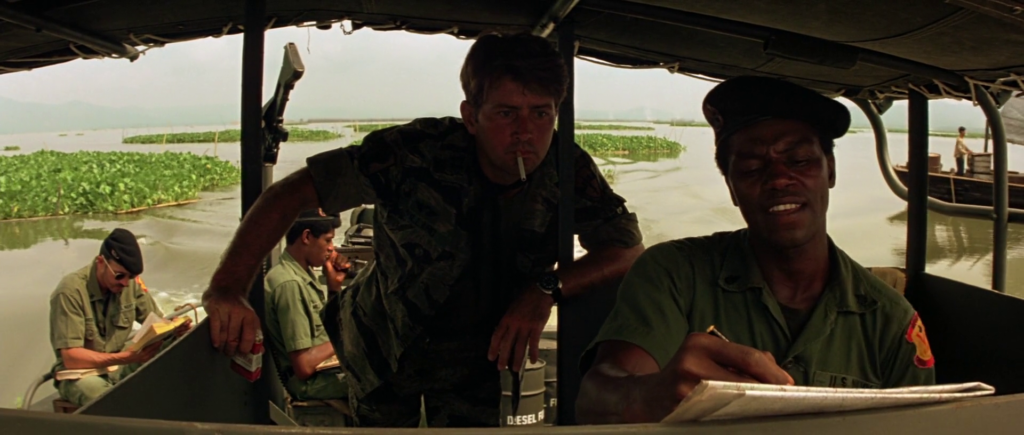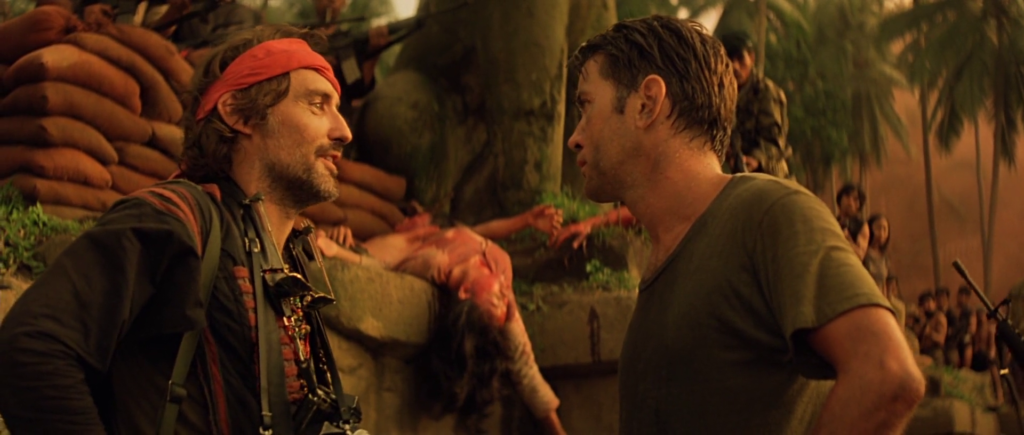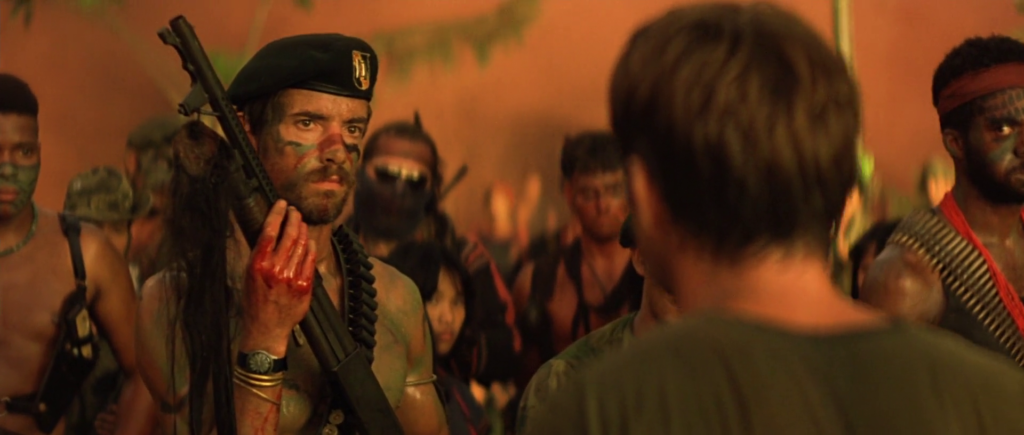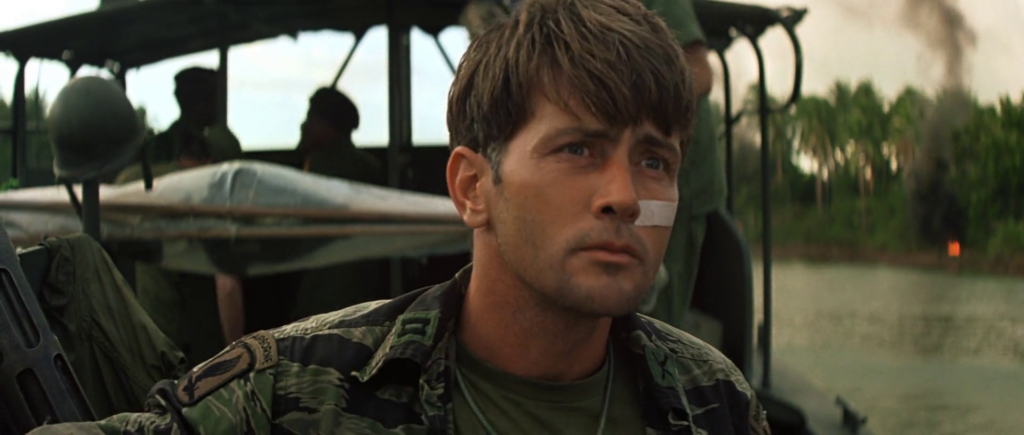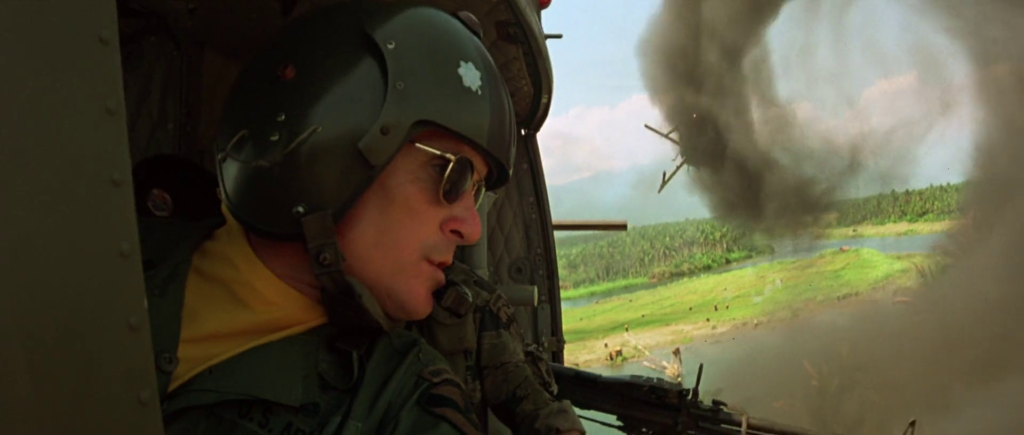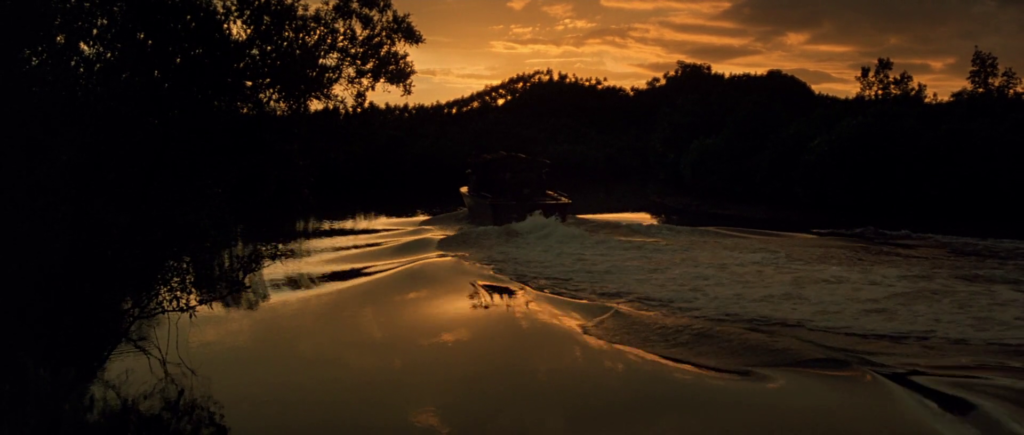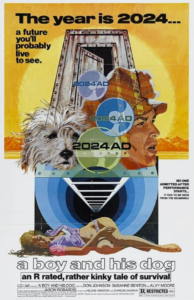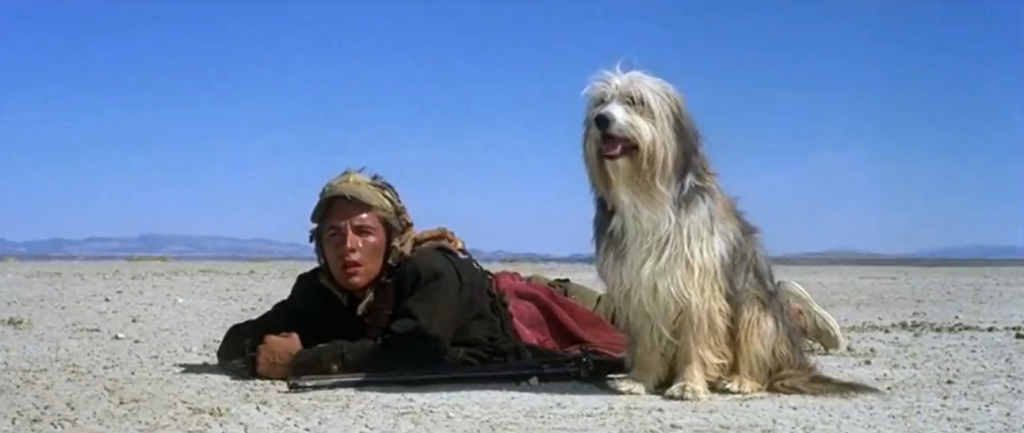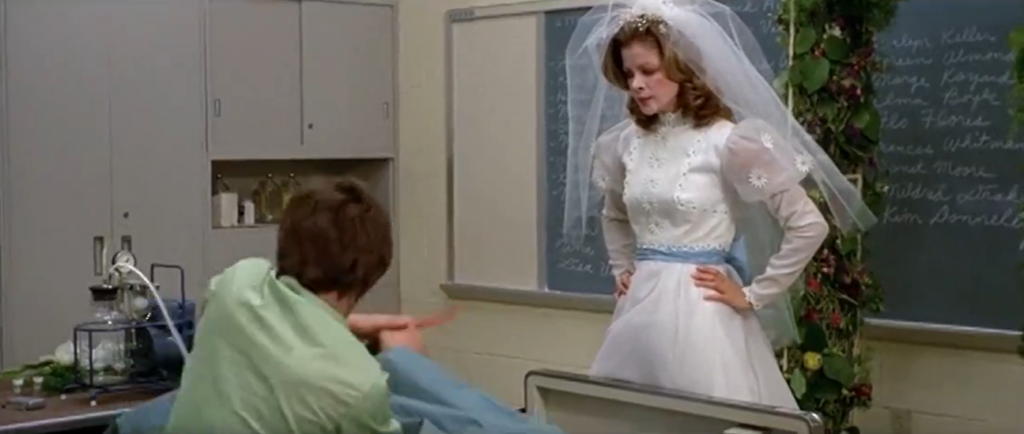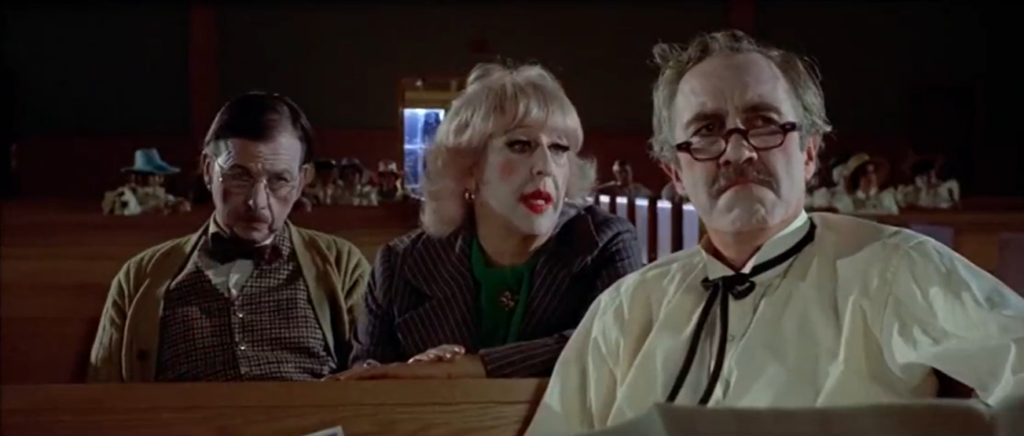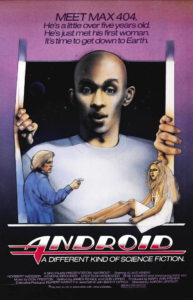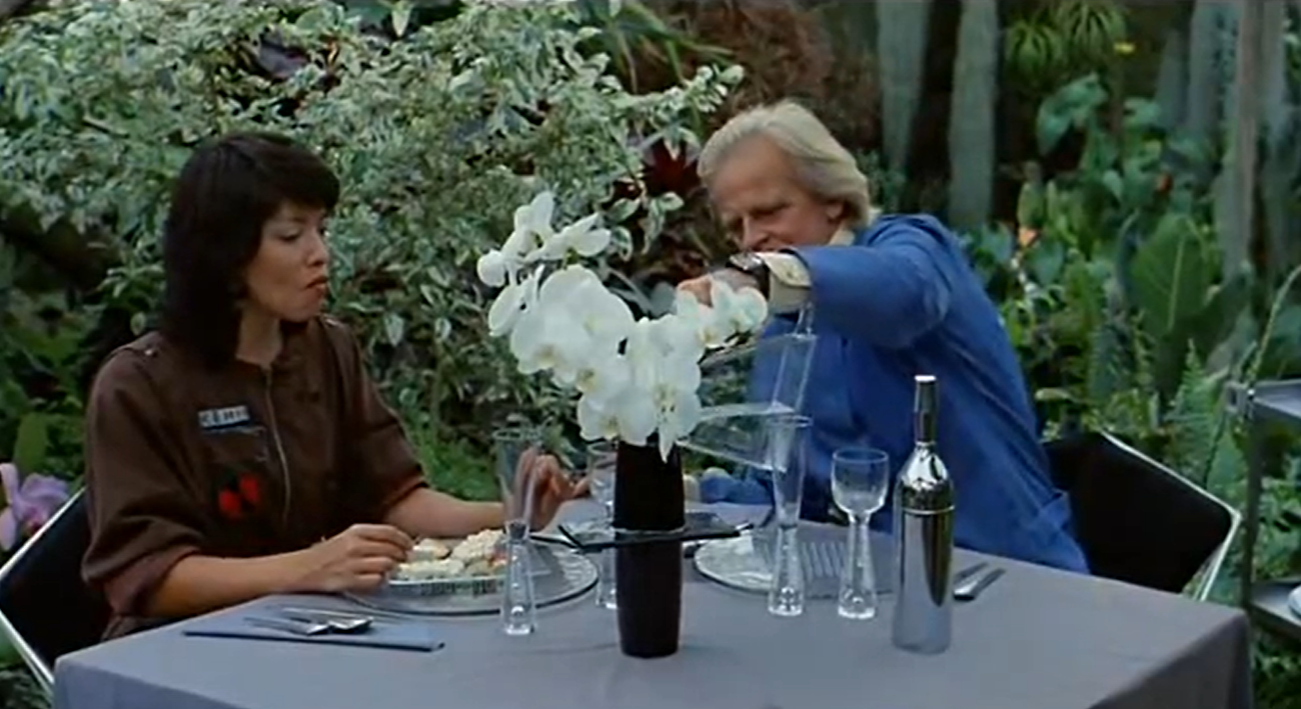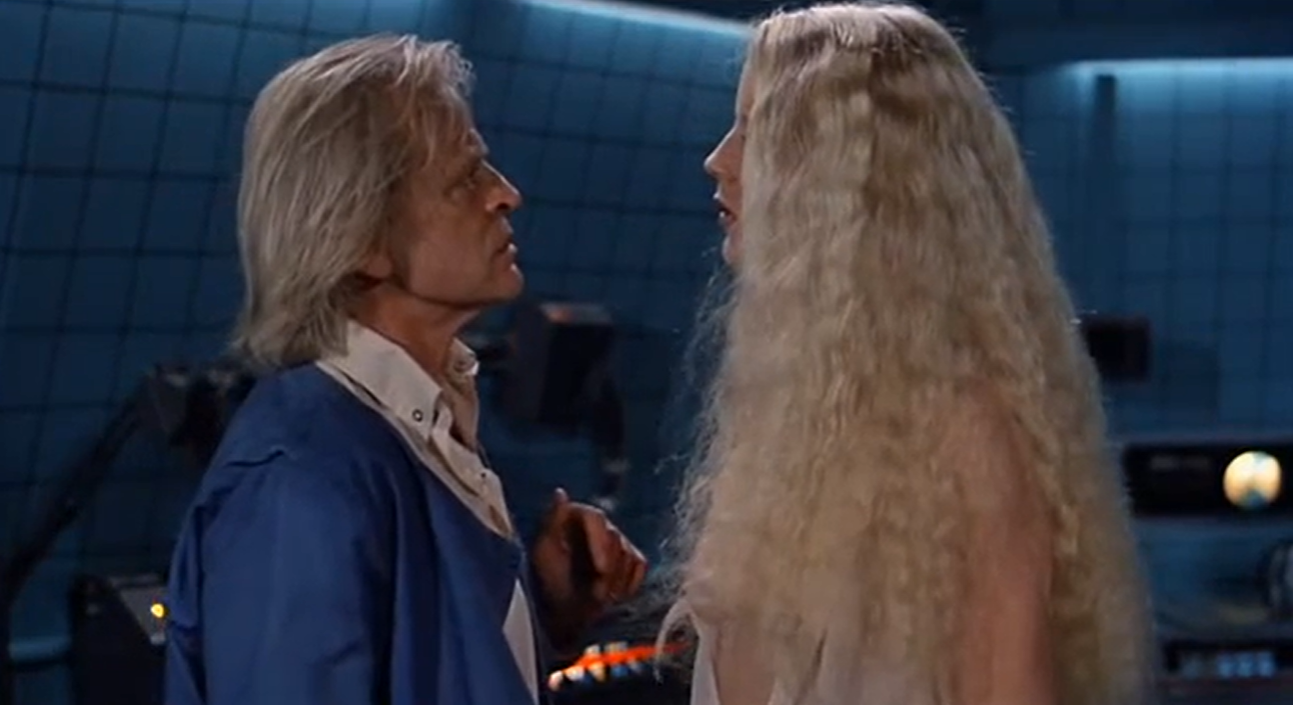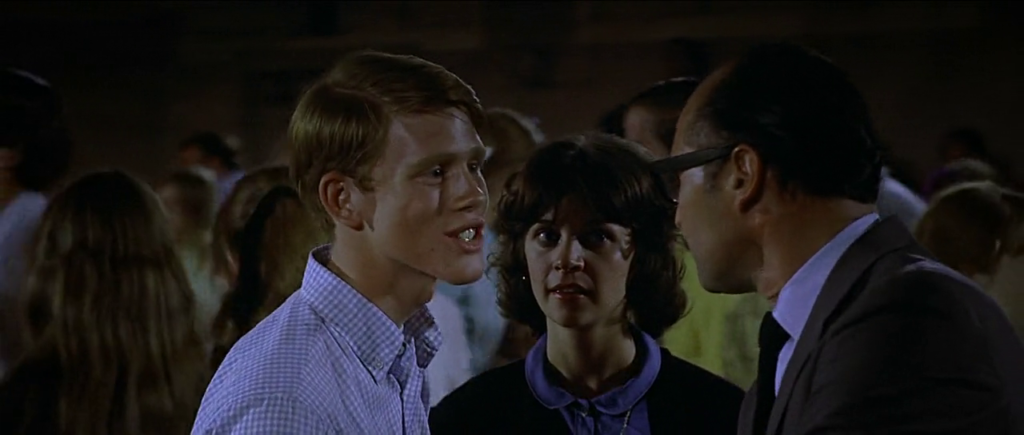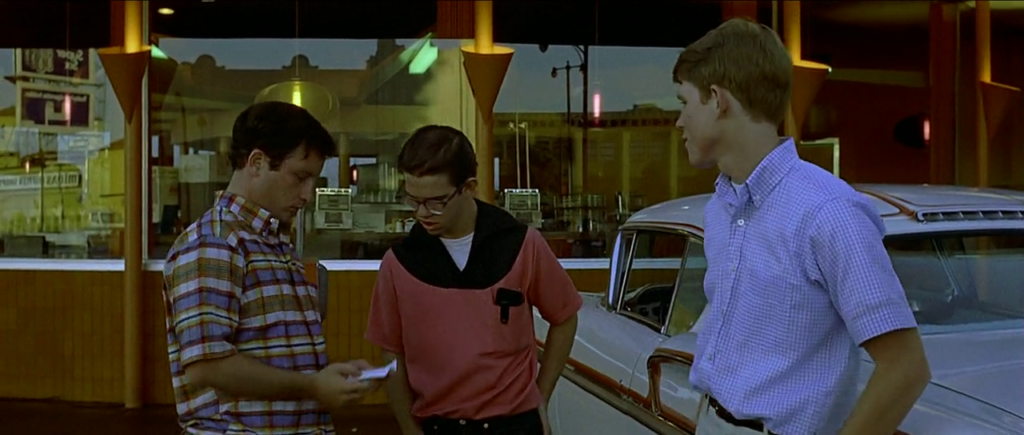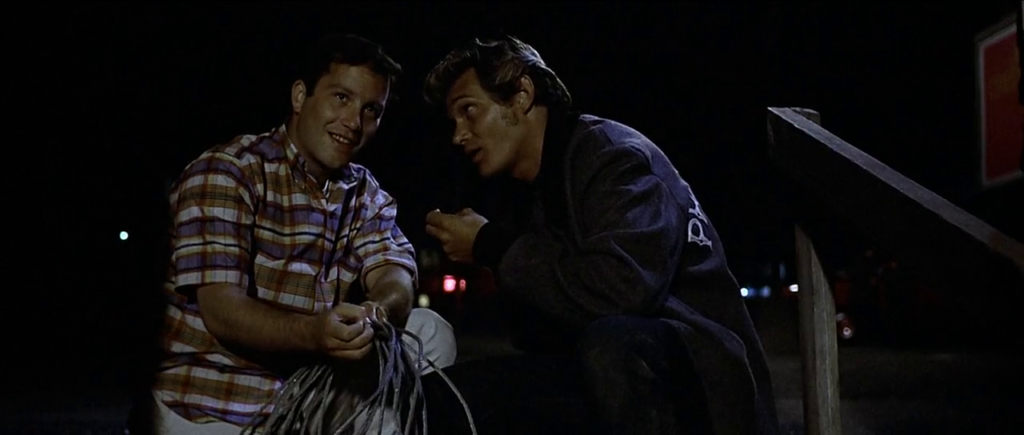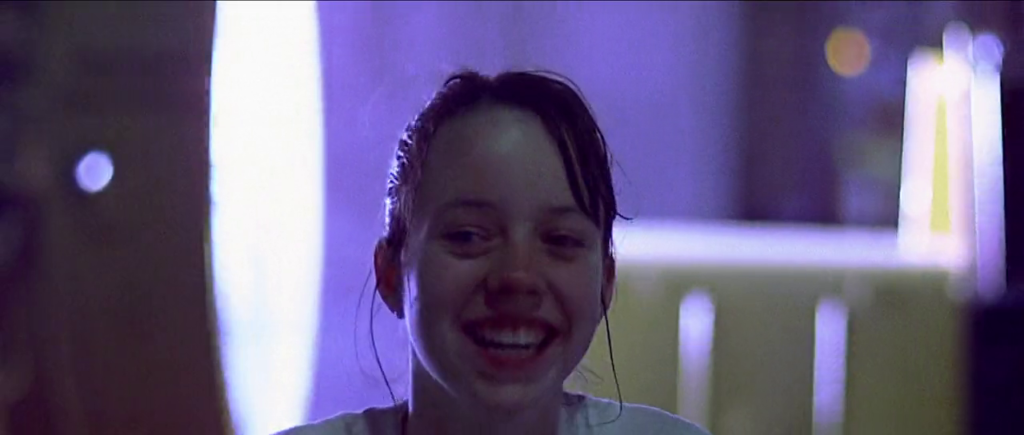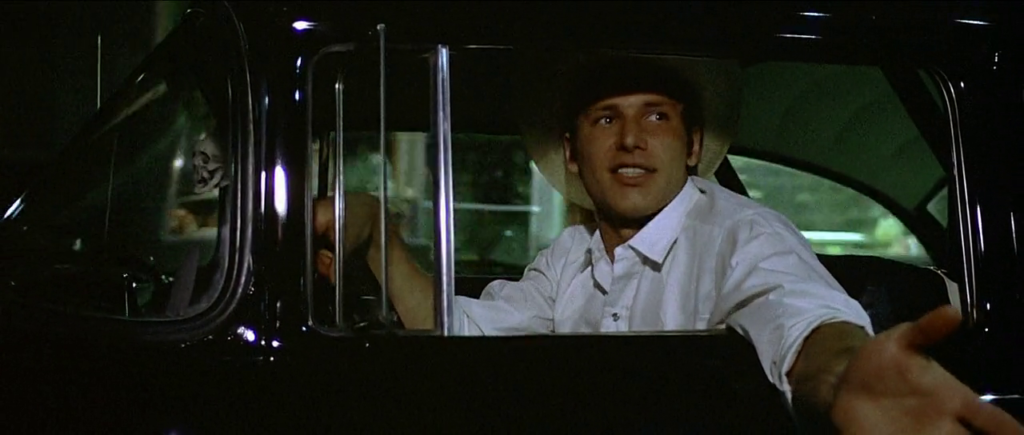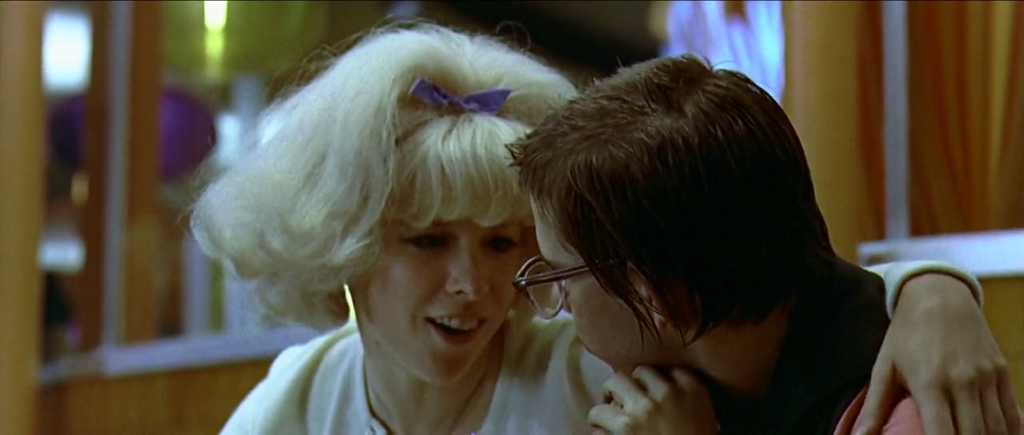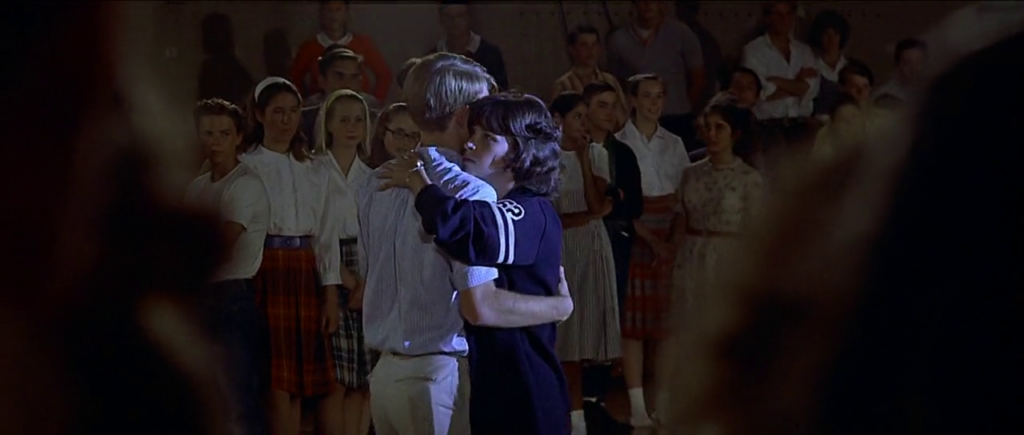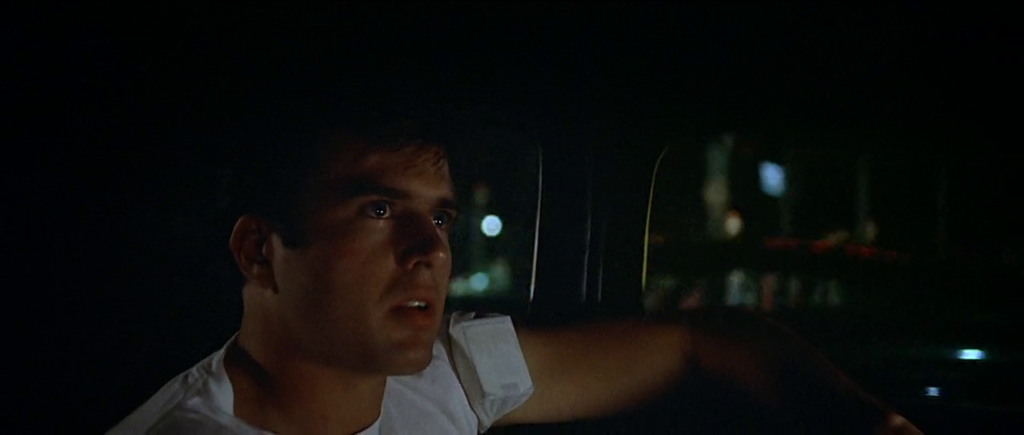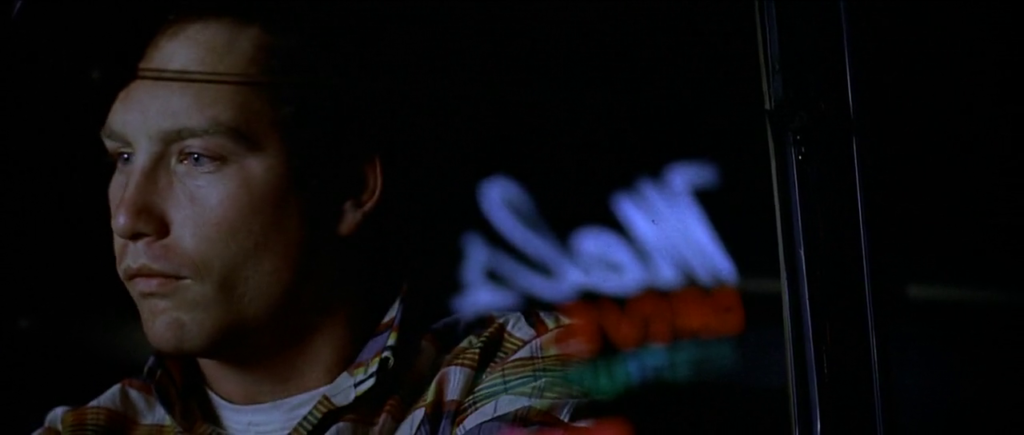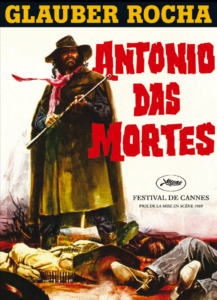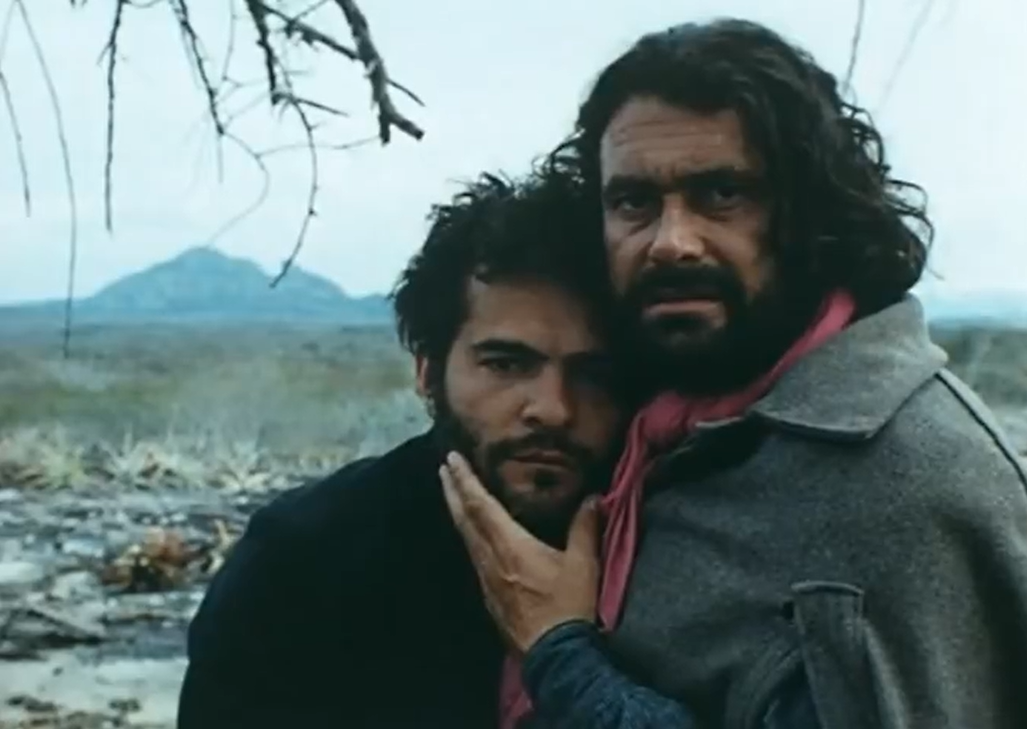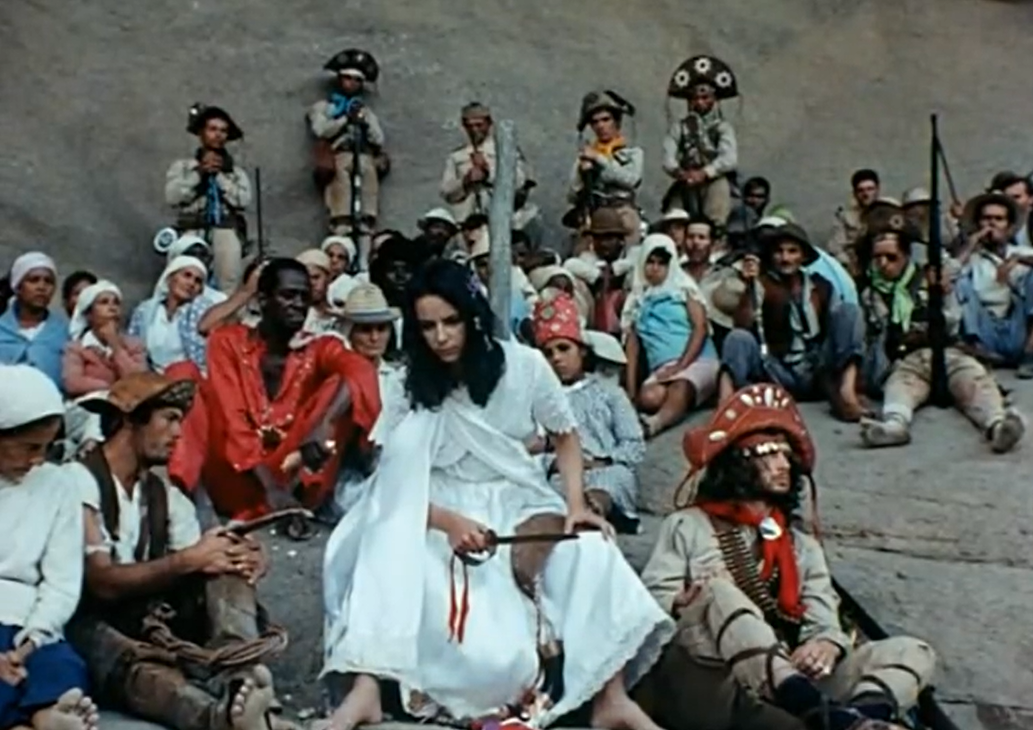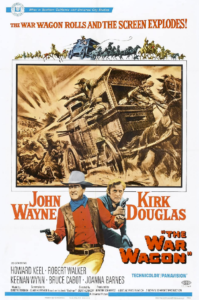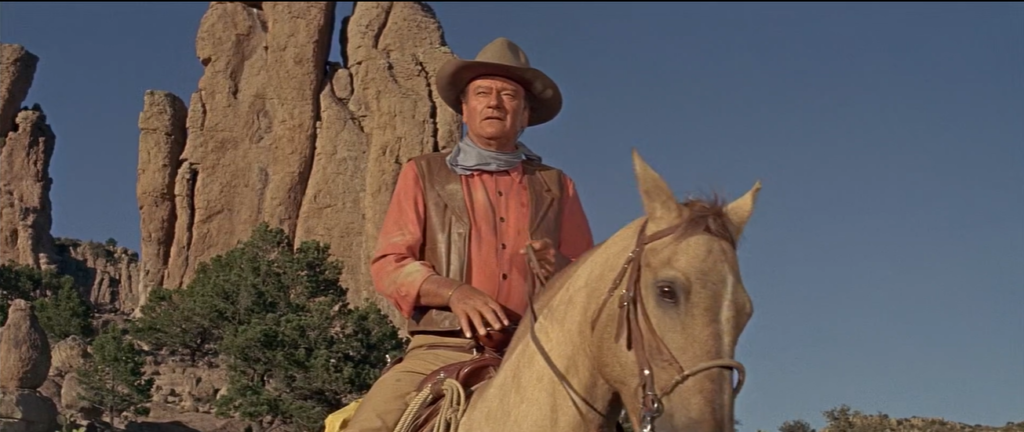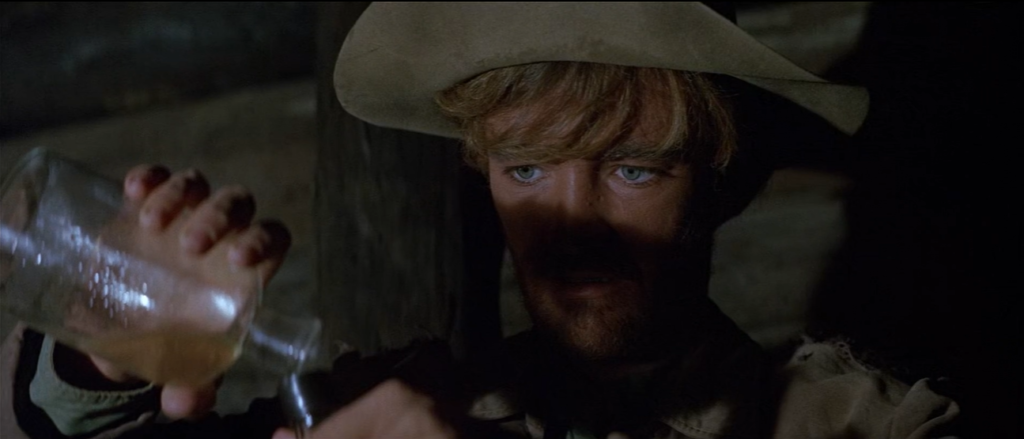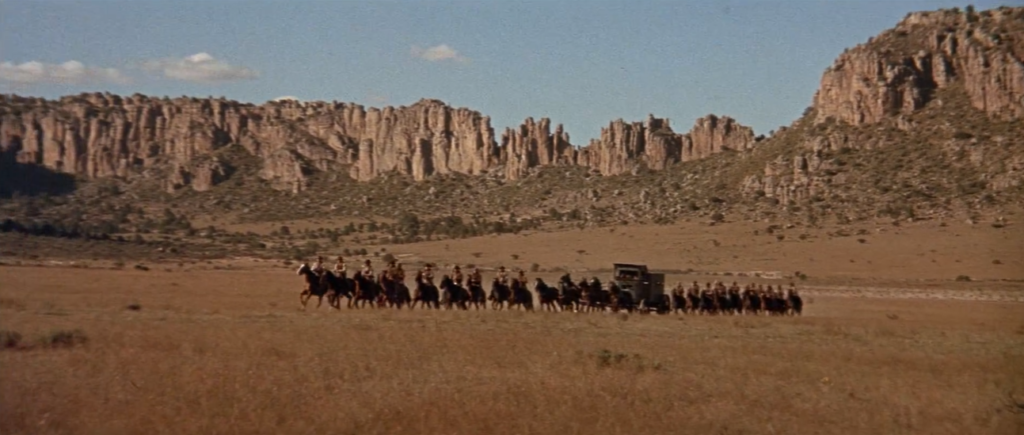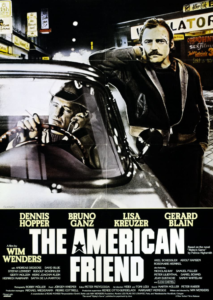|
Genres, Themes, Actors, and Directors:
- Bruno Ganz Films
- Dennis Hopper Films
- Friendship
- Hit Men
- German Films
- Mafia
- Wim Wenders Films
Response to Peary’s Review:
As Peary writes, “Wim Wenders’s dazzling psychological thriller, adapted from Ripley’s Game by Patricia Highsmith, was the first film of [the] West German film renaissance to be truly accessible to American audiences,” given that “the colors are splashy rather than subdued”:

… “there are references to familiar English-language rock songs; the picture is set partly in America, and English is the dominant language; Dennis Hopper (as Tom Ripley) co-stars”:
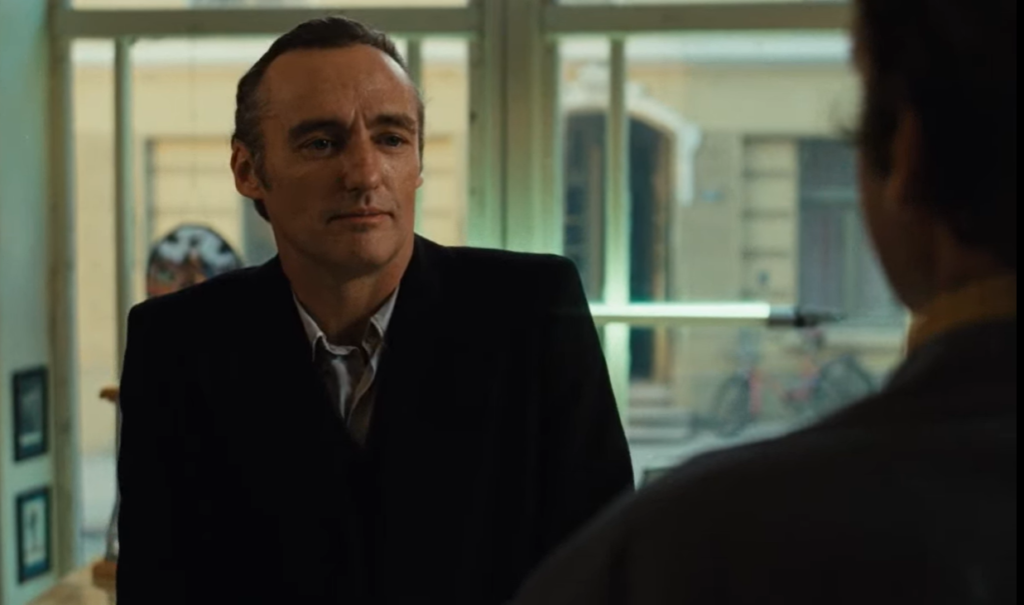
… “and supporting parts are played by well-known American director Sam Fuller (as a Mafia man)”:
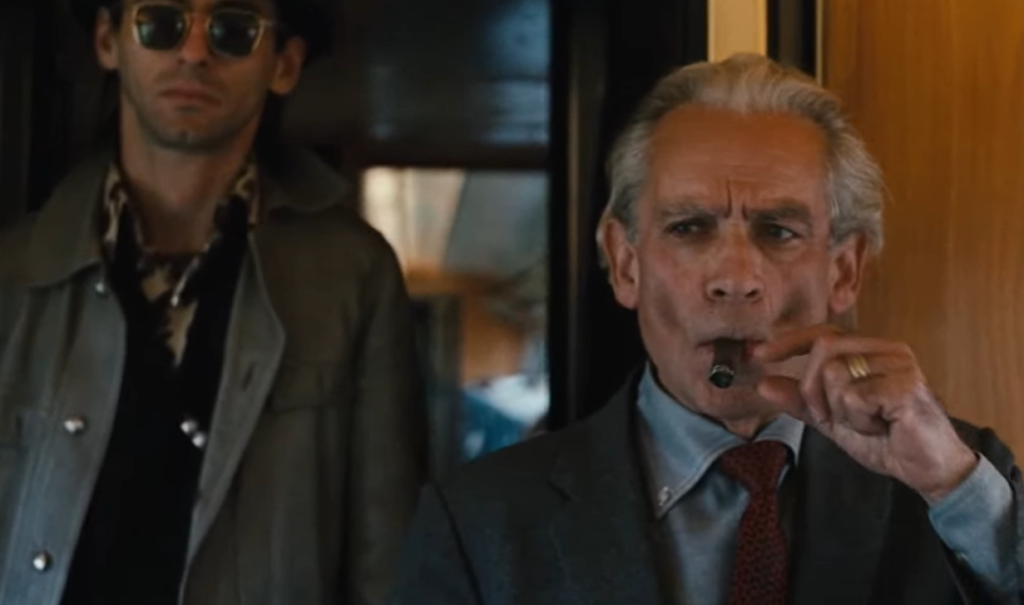
… “and Nicholas Ray (as the supposedly dead artist whose paintings Ripley sells).”
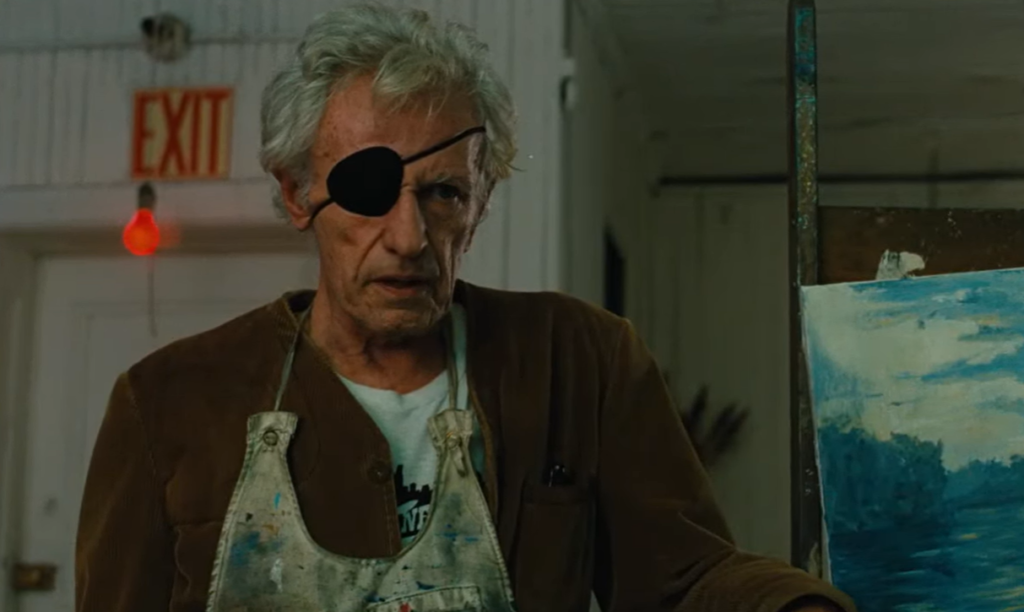
Peary points out that “Wenders’s sharply edited action sequences are influenced by Fuller,” while “his use of the frame as an arena for tension and to expose character isolation was influenced by Ray.”
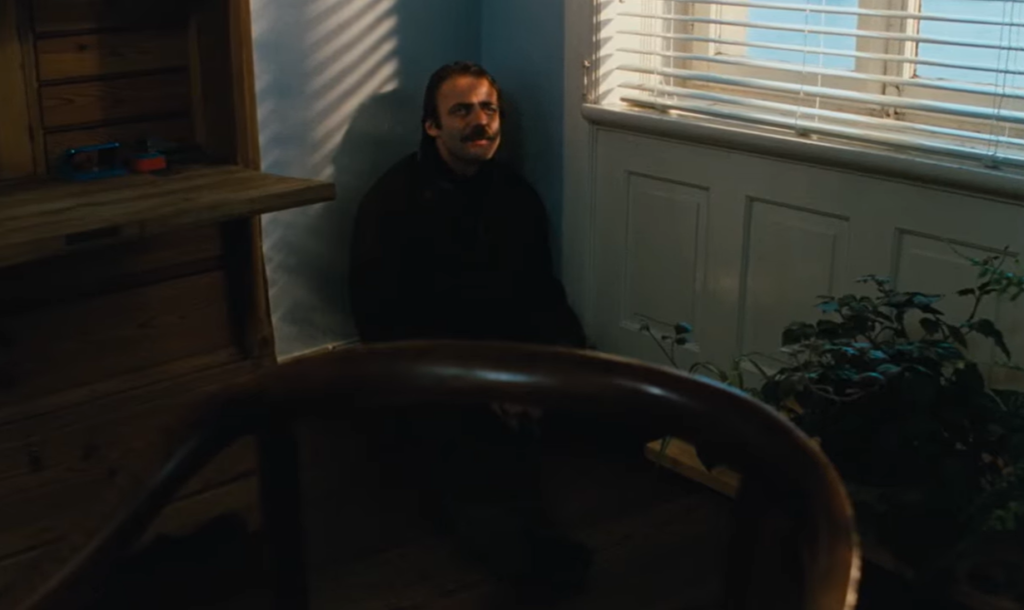
However, he adds that “the storyline and characters… are most reminiscent of Hitchcock, specifically Strangers on a Train — which was also based on a Highsmith novel.”
Peary describes the film’s complex plot as follows in GFTFF: “In Germany to sell a painting, Ripley is slighted by Jonathan (Bruno Ganz), a simple Swiss frame-maker, who won’t shake his hand because of his shady reputation.”
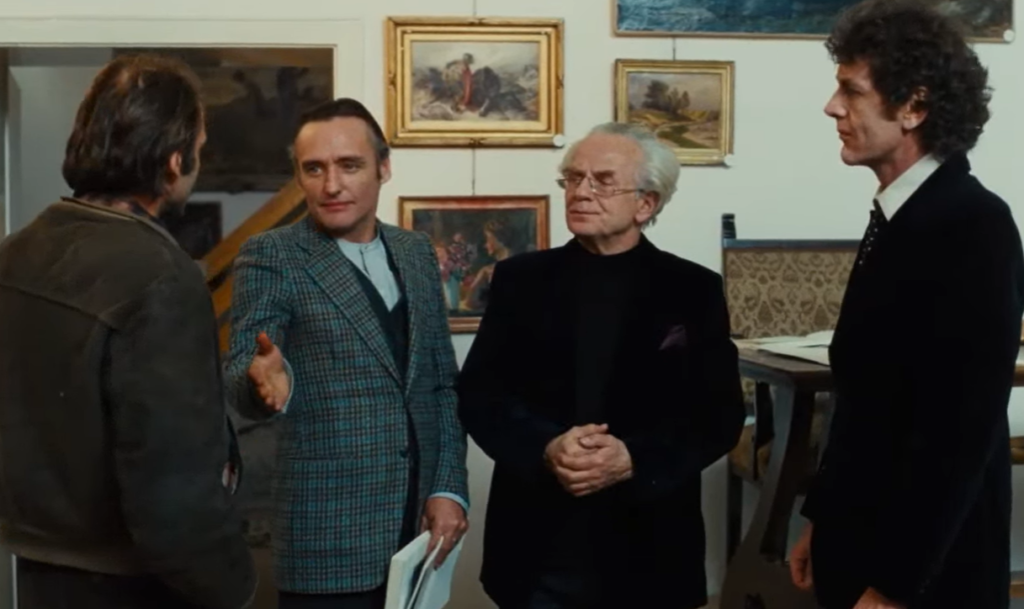
“Insulted, Ripley secretly recommends Jonathan to a rich criminal friend (Gérard Blain) who is looking for a non-criminal to assassinate Mafia men.”

“Knowing Jonathan has leukemia, Tom starts a rumor that he is no longer in remission. Soon Jonathan believes he is about to die” and, “wanting to leave money to [his] wife and child after his death, he is talked into committing the crimes — although he has never done an incorrect act in his life. Meanwhile he and Tom become friends, while his marriage to Marianne (a fine performance by Lisa Kreuzer, Wenders’s wife) deteriorates because of his lies about his activities.”
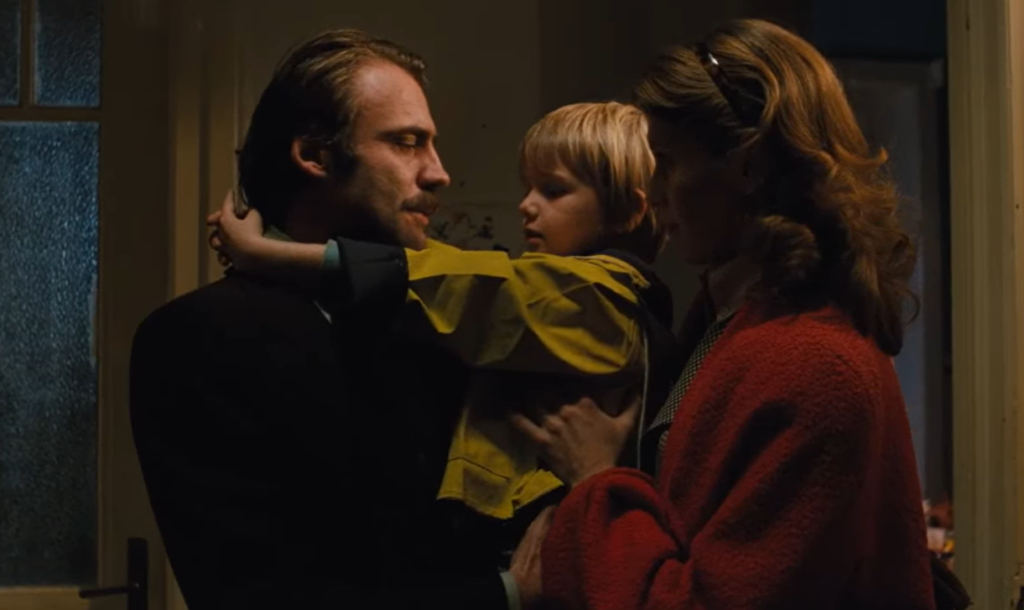
Peary points out that while “conscience, guilt, and morality based on a religious code were important to Highsmith,” “Wenders doesn’t deal with these themes” — instead, “as his world has no God, he is concerned with existential themes (depressed Ripley worries that his meaningless life is endless; depressed Jonathan fears his life will soon be over) and male bonding and friendship between opposites.”
Indeed, both men could be viewed as “aliens in their respective environments”, given that “Tom admires Jonathan’s stable family life, while Jonathan admires Tom’s freedom from family responsibilities and his criminal activities” and is “appreciative that Tom helps him engage in excitement.”
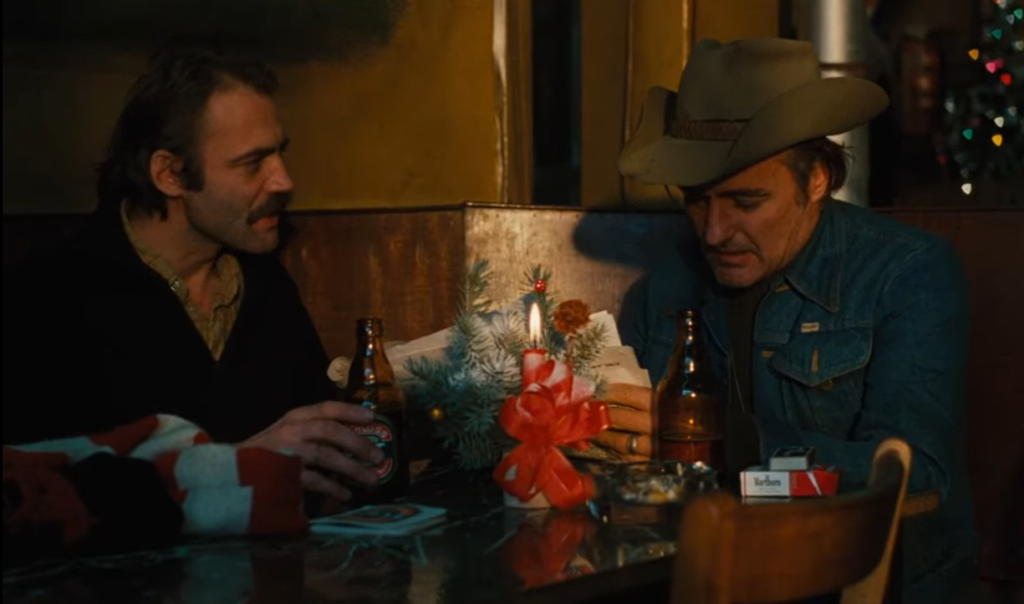
Peary’s assessment — including his additional musings in Cult Movies 2, where he discusses the film in further detail — accurately sums up this often enigmatic thriller, which gets dark quickly but remains highly engaging throughout. We can’t stop watching Ganz as he spirals into increasingly violent situations, knowing that one way or another, he’s doomed.
Notable Performances, Qualities, and Moments:
- Bruno Ganz as Jonathan Zimmermann
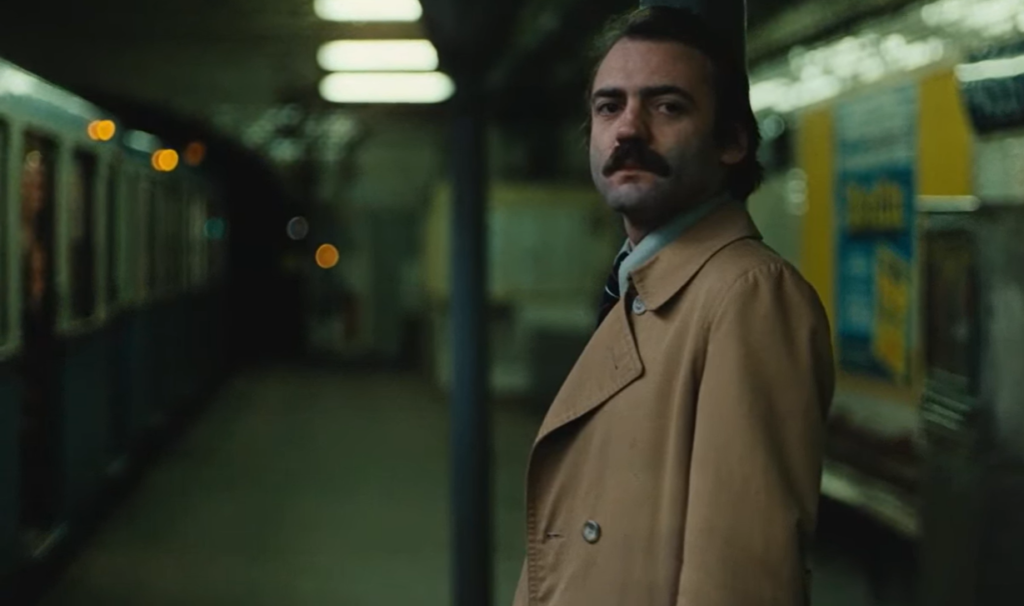
- Dennis Hopper as Tom Ripley
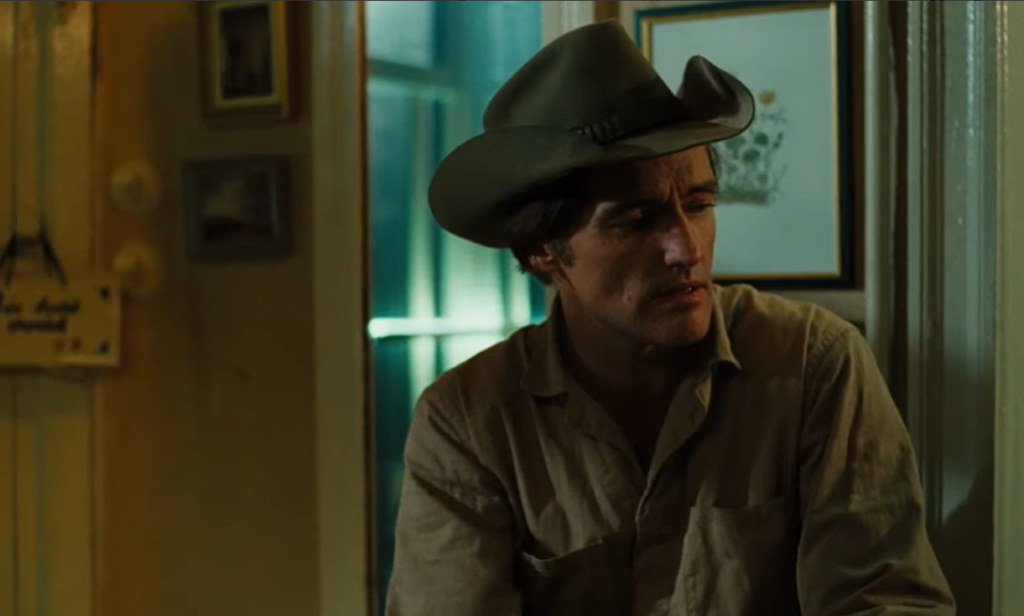
- Lisa Kreuzer as Marianne Zimmermann
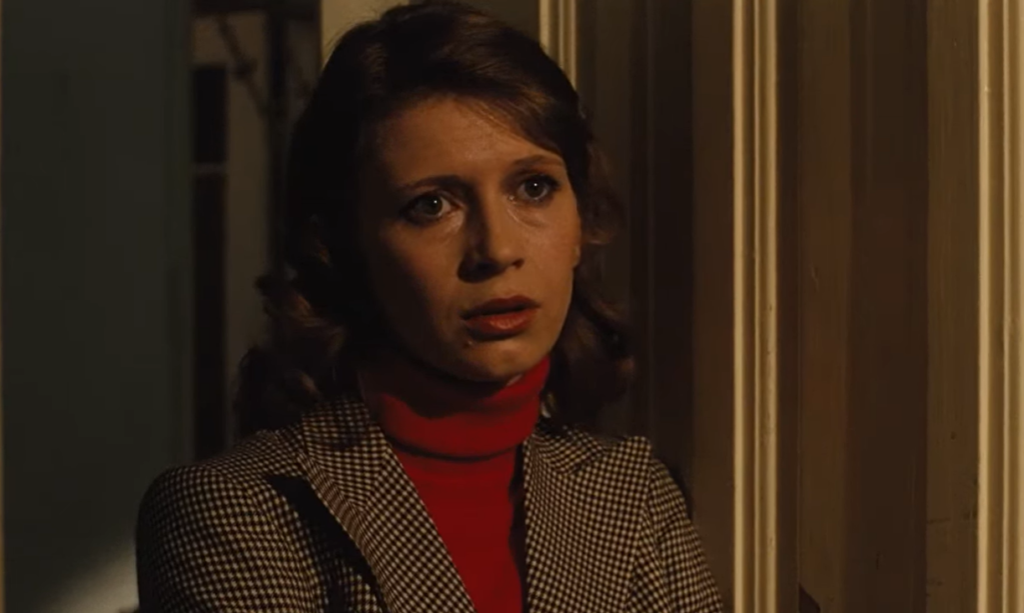
- Robby Müller’s cinematography

- Good use of location shooting
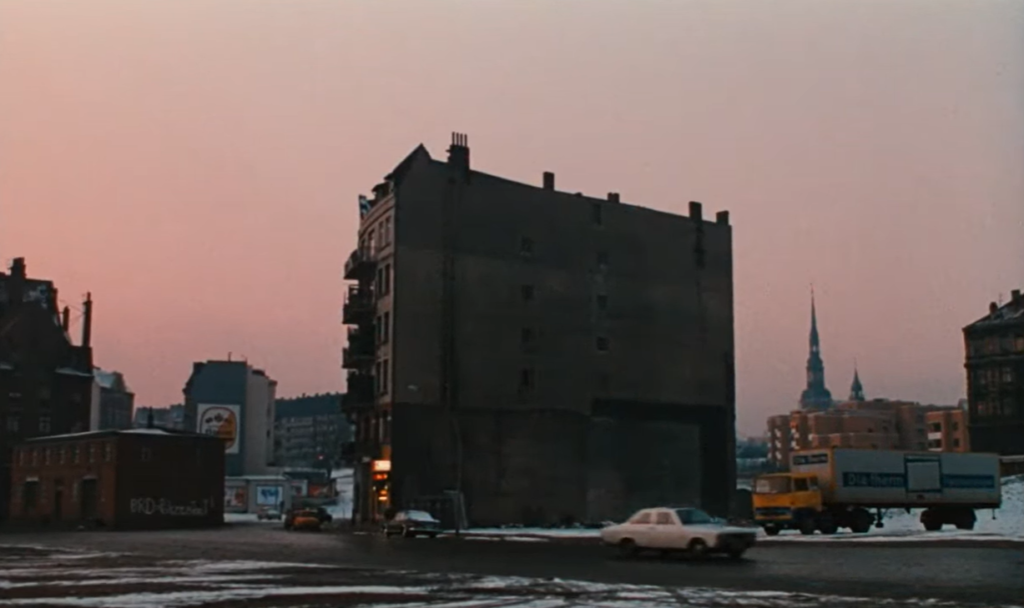
- Jürgen Knieper’s score
Must See?
Yes, as a foreign classic.
Categories
(Listed in 1001 Movies You Must See Before You Die)
Links:
|
